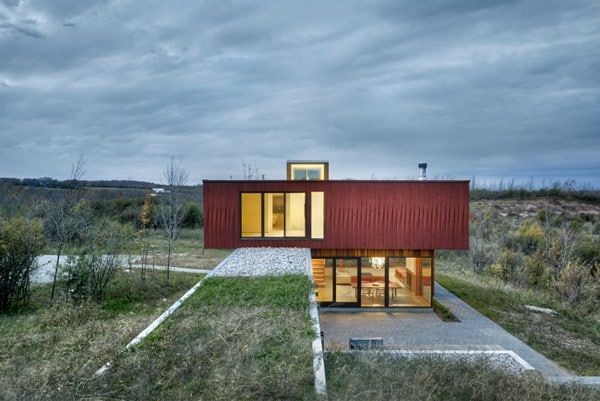
The House in Frogs Hollow is a country retreat designed by Williamson Chong Architects, located on a long slope of the Niagara Escarpment overlooking Georgian Bay, in Grey Highlands, Ontario, Canada. The property is a collection of eroded clay hills and protected watershed zones blanketed with a dense field of hawthorn and native grasses. It is not picturesque, but tough and rather impenetrable.
The clients, who gather at the property throughout the year, are avid cyclists who spent months on the 100 acre property prior to construction cutting in discreet mountain biking trails and learning the paths of the horses and snowmobiles as they emerge from the community over the seasons. Because of their connection to the landscape, a primary site strategy was to resist the inclination to build on the top of the hills where one could survey the property in its entirety and instead carve out a building area at the base of the hillside.
The 2,000 square foot house is not the final destination, but a stopping place within their network of activity. Carved into the landscape, the muscular tectonic of the long concrete wall figuratively clears the site for building while bridging the natural and tempered environments. The concrete has a toughness that mirrors the landscape, providing protection from the prevailing winter winds. During the summer months the wall provides patio shade, creating pools of cooler air that are passively drawn through the house.
Entry is at the west end of the concrete wall and into a service bar containing the stair, kitchen, office, bike workshop, storage room, and mechanical room. This functional zone serves as a backdrop to the glassed in living area that opens on three sides to an extended view of the rolling landscape.
The first and second floors are connected by a figured stair enclosure. This digitally fabricated element is designed to filter light from the clerestory volume above. At the ground floor it carves into the area below its upper run to gather more space at the entry and allow for a seating area.
The second level hovers above the concrete wall and living space. It contains the bedrooms, bathrooms, and family room in a tight wrapper of customized ship lap siding. Designed as an undulating rhythm of varying widths, thin boards are CNC milled to a shallow depth while wider boards are milled with deep striations, casting long shadows that track the sun as it moves around the house. The siding is stained with a linseed oil based iron oxide pigment that requires reapplication only once every 15 years.
The house’s connection to the land is reinforced not only in its architectural form, but also in its environmental footprint. The house is heated with radiant floor loops that supplement the passive winter heat gain from south facing windows. In addition, there is no mechanical cooling. Instead, the stair tower and operable windows facilitate passive ventilation that draw cool air through the house from shaded exterior areas. Natural materials and pigments were used throughout and a small square footage was maintained to further reduce construction costs and keep future energy consumption to a minimum.
Photos: Bob Gundu

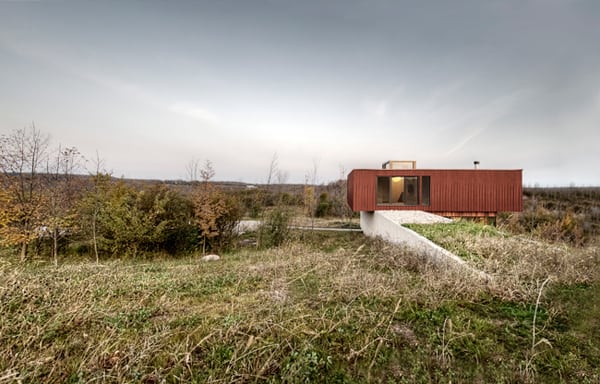
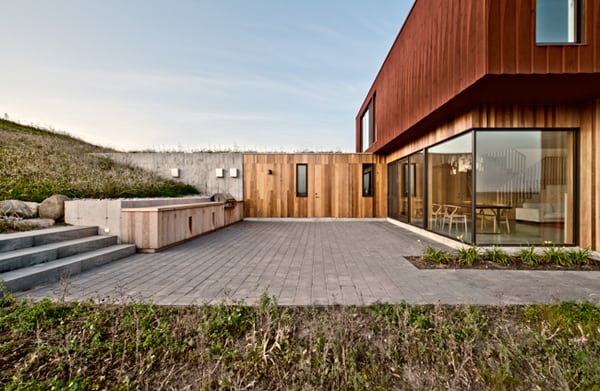

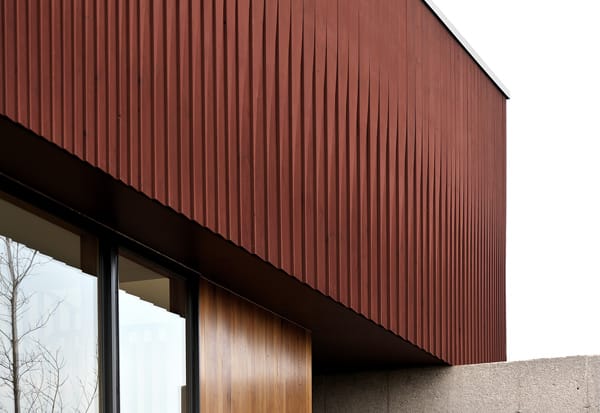

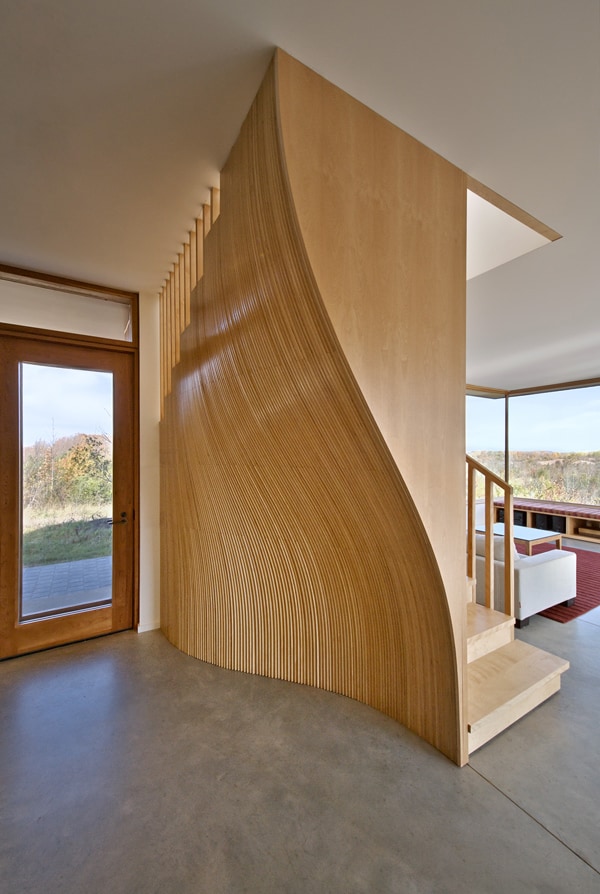

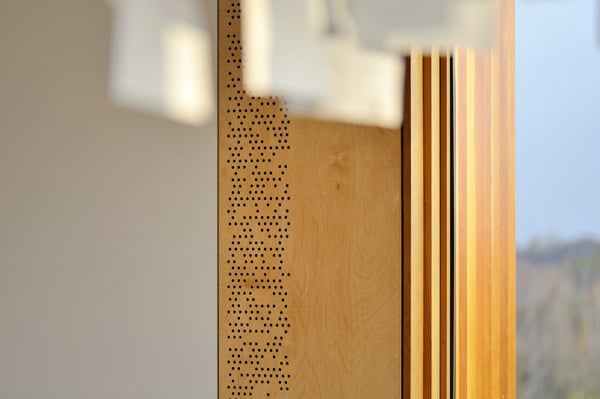
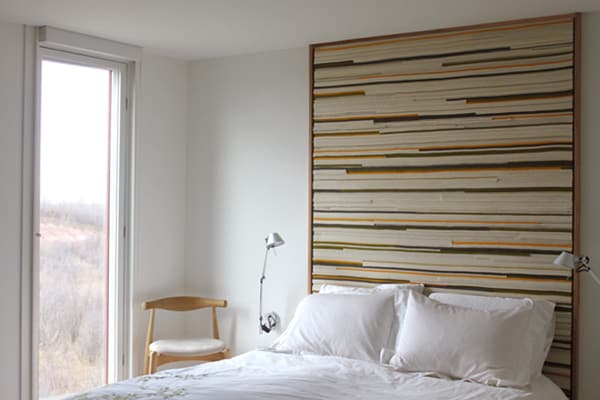
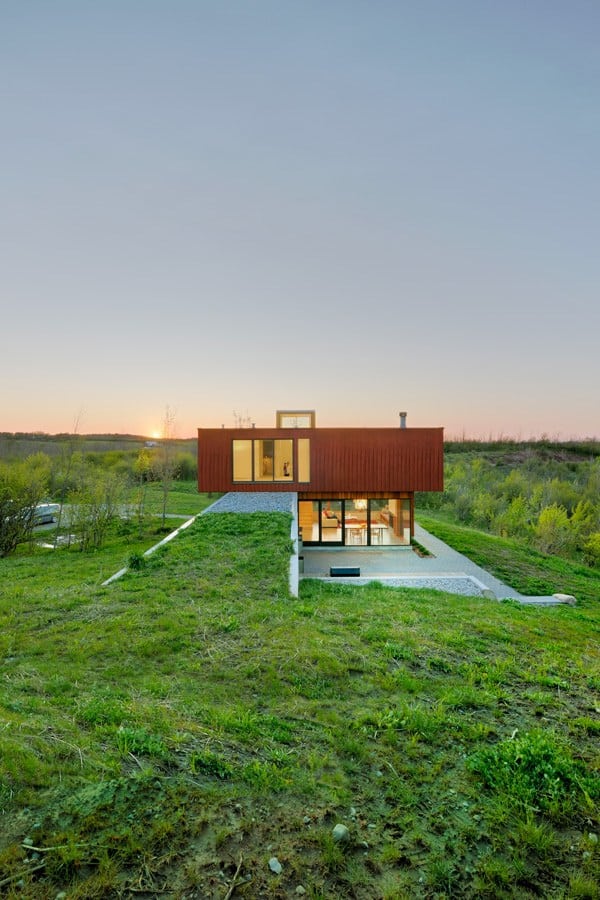
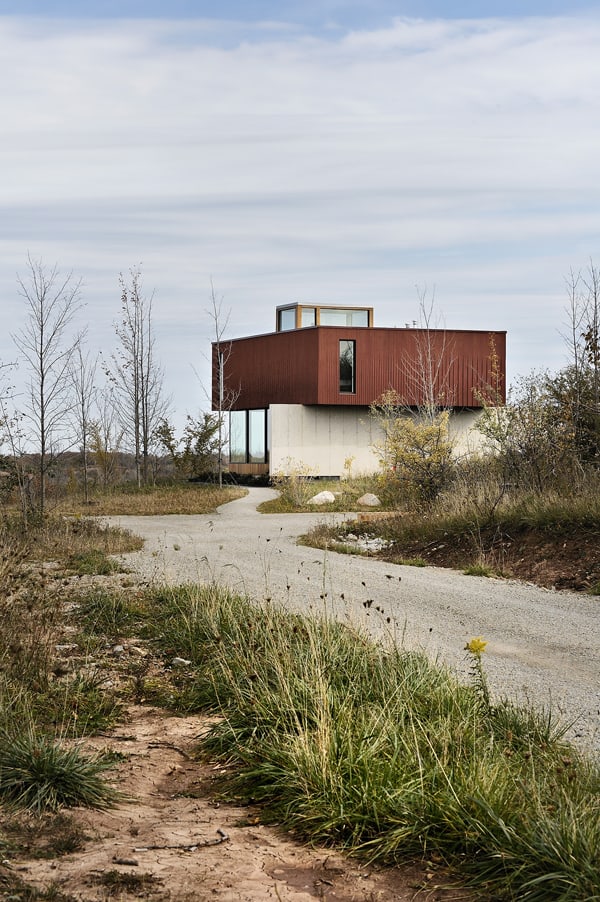
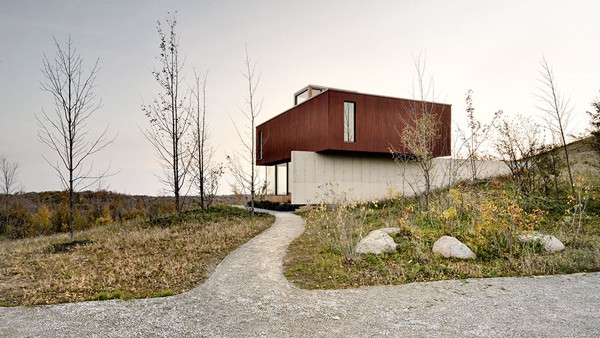
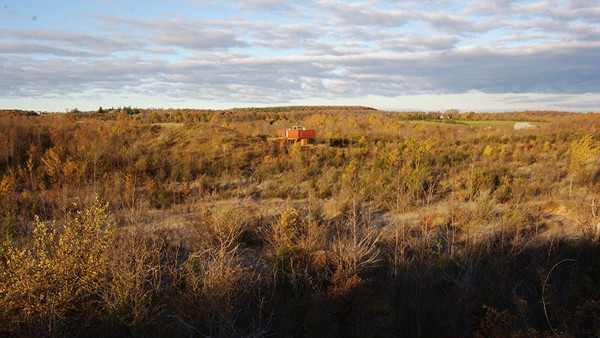
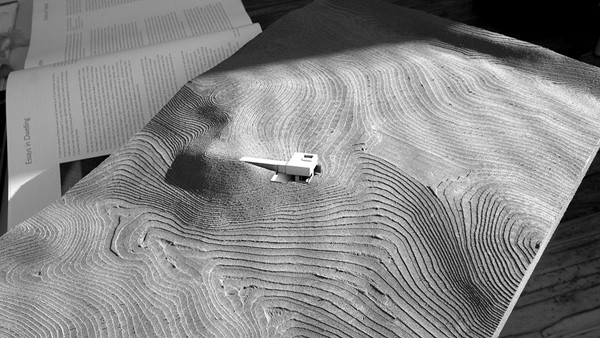
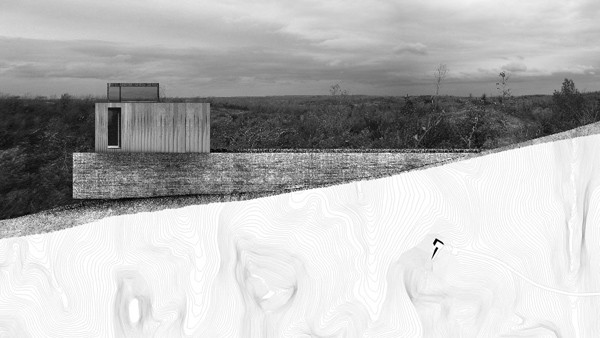
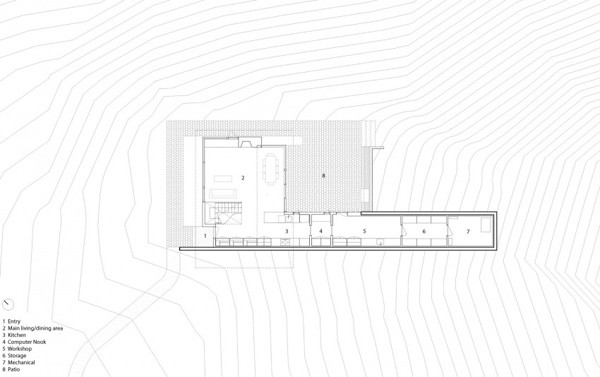
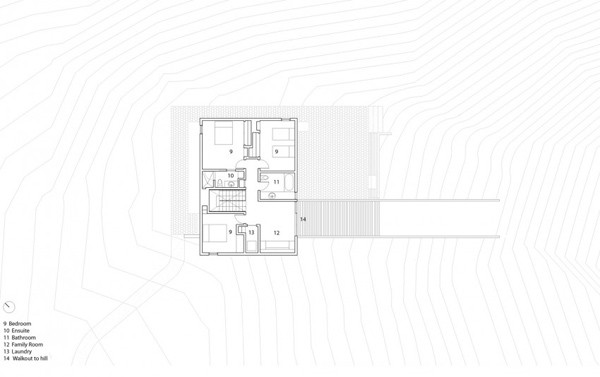
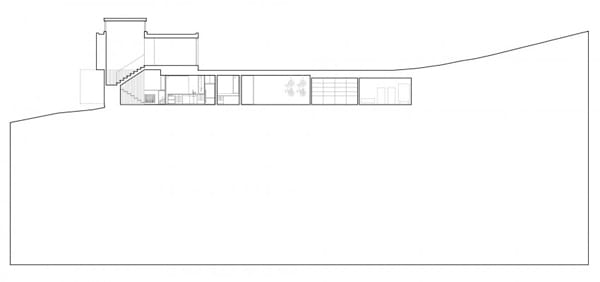
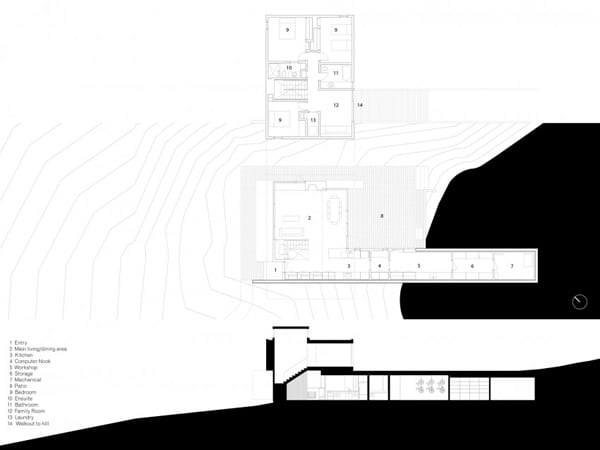
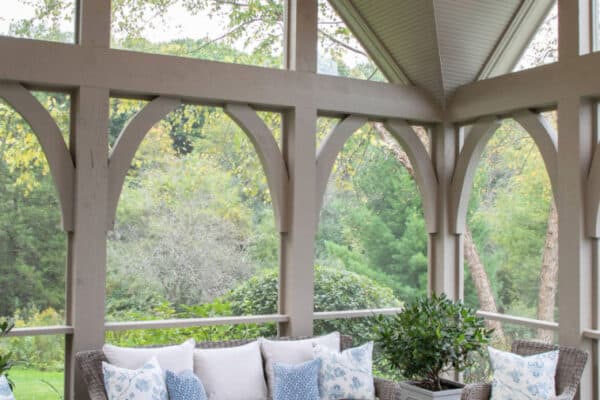



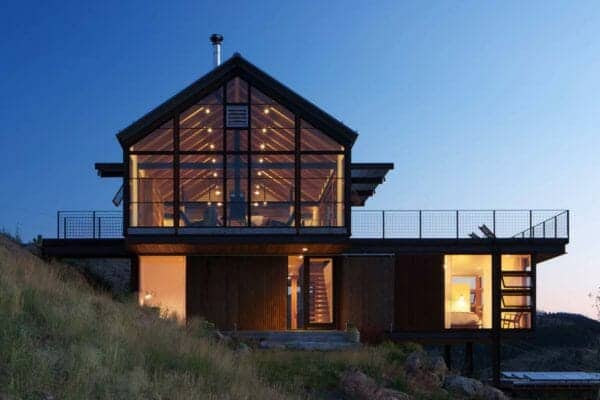

0 comments